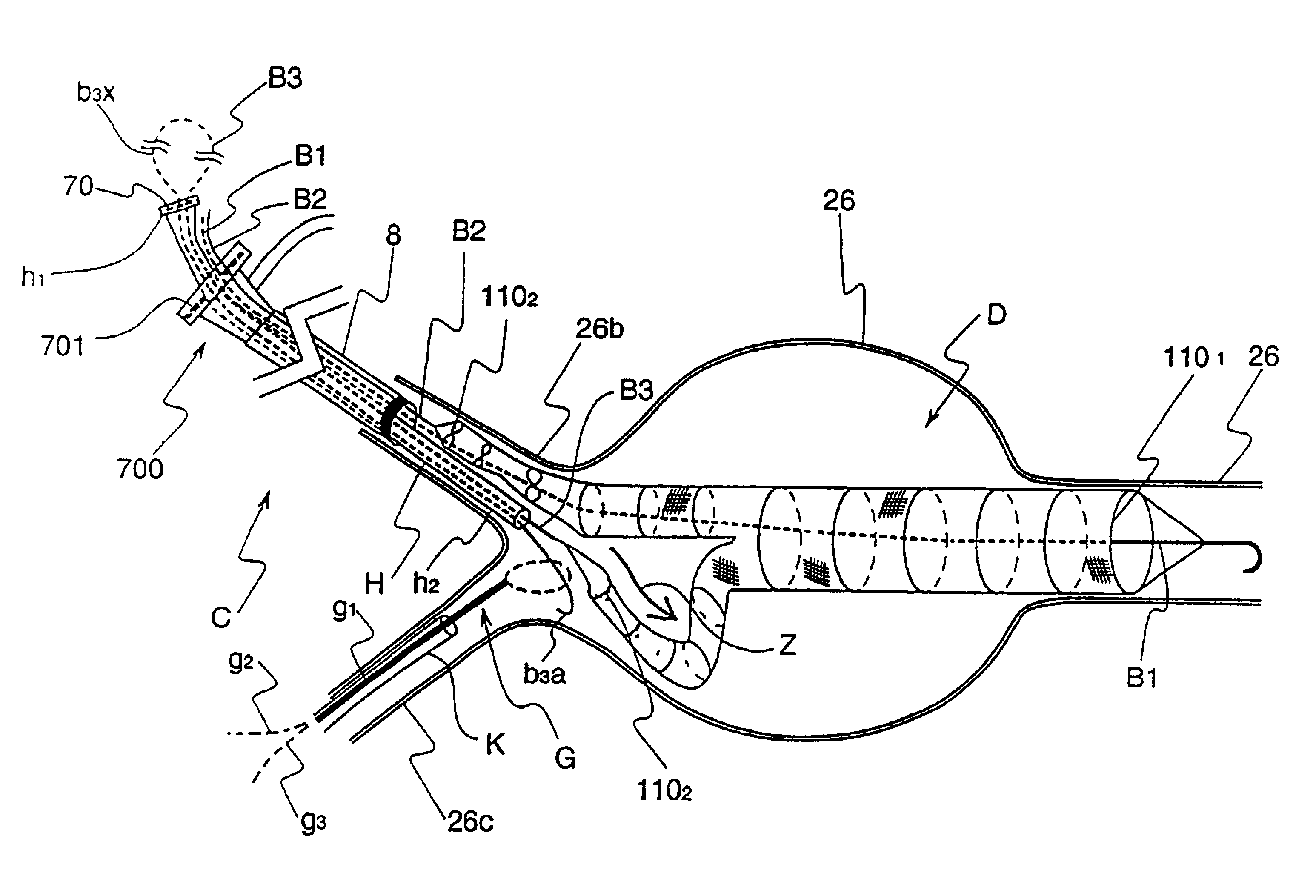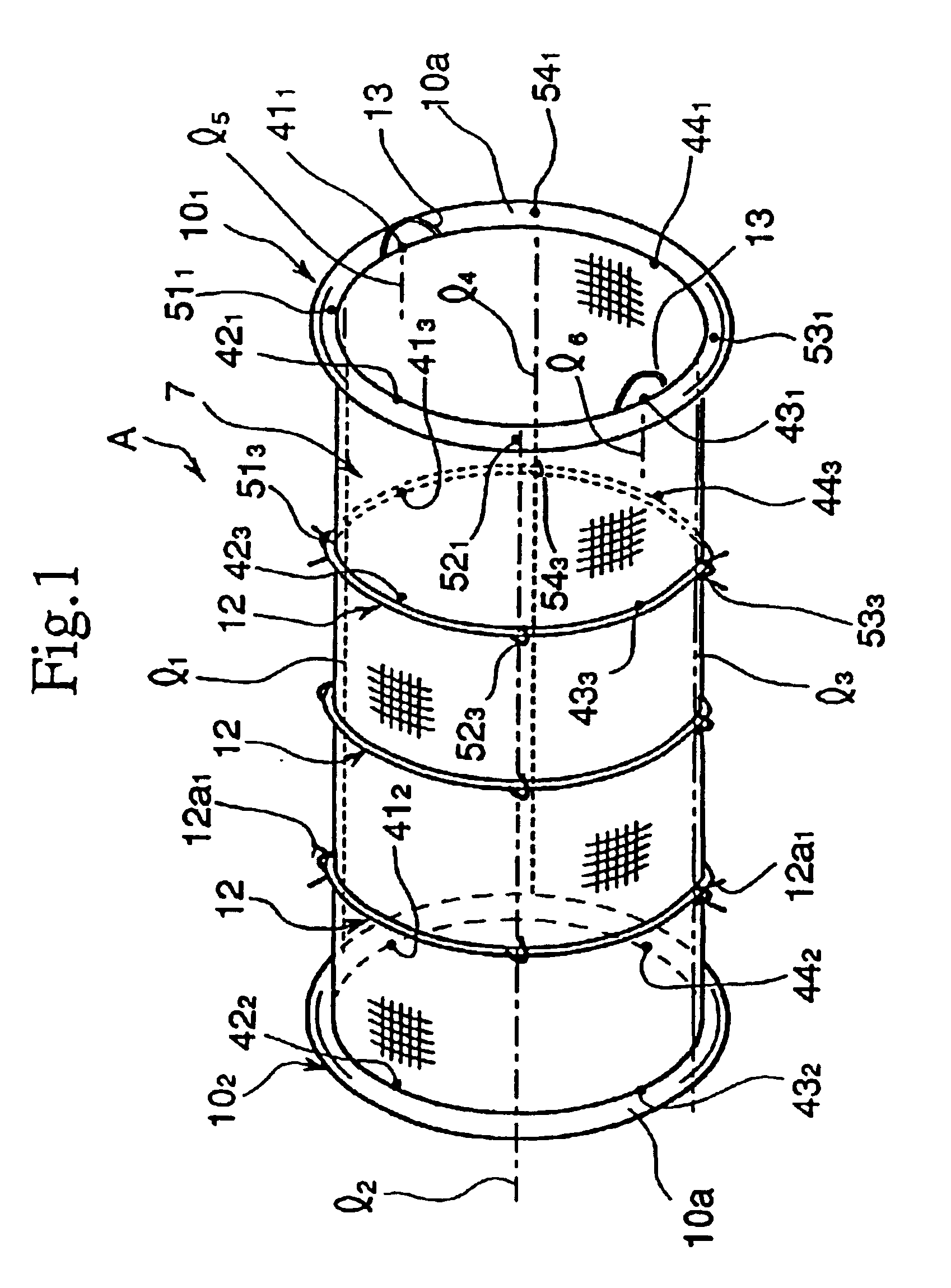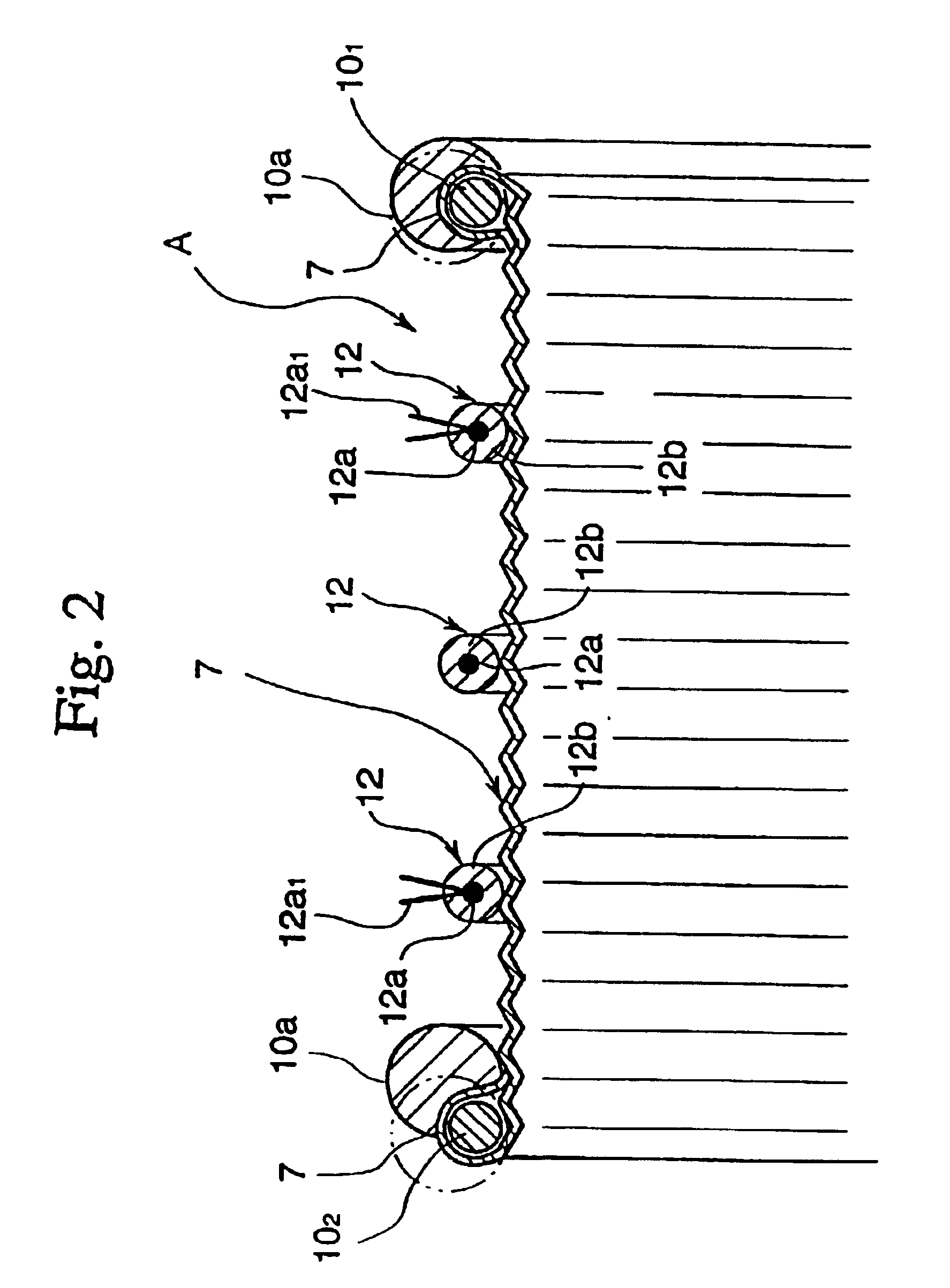Device for handling an appliance to be implanted
a technology for implanting devices and appliances, applied in the field of medical devices, can solve the problems of low life-saving rate and high risk of surgically implanting artificial blood vessels for the treatment of aortic aneurysms, and achieve the effects of preventing bleeding, improving accuracy and efficiency of implanting the appliance to be implanted, and connecting smoothly
- Summary
- Abstract
- Description
- Claims
- Application Information
AI Technical Summary
Benefits of technology
Problems solved by technology
Method used
Image
Examples
Embodiment Construction
[0111]The invention will be described in detail with reference to the embodiments thereof shown in the accompanying drawings.
[0112]The artificial blood vessel A as the appliance to be implanted, which is collapsed by the method in accordance with this invention, comprises, as shown in FIG. 1, a cover 7, end wire rings 101, 102 and intermediate wire rings 12.
[0113]The cover 7, as shown in FIG. 2, consists of a flexible, tensile sheet shaped into a tube of bellows, the normal diameter of which generally corresponds to the shape of that portion of the human blood vessel at which the artificial blood vessel A is to be implanted. The sheet of the cover 7 is, for example, of warps extending in the axial direction of the artificial blood vessel A woven with wefts extending in the circumferential direction thereof, wherein the warps are of mono-filament made of polyester (about 15 denier) and the wefts are of multi-filament made of a plurality of superfine filaments (about 50 denier) interw...
PUM
 Login to View More
Login to View More Abstract
Description
Claims
Application Information
 Login to View More
Login to View More - R&D
- Intellectual Property
- Life Sciences
- Materials
- Tech Scout
- Unparalleled Data Quality
- Higher Quality Content
- 60% Fewer Hallucinations
Browse by: Latest US Patents, China's latest patents, Technical Efficacy Thesaurus, Application Domain, Technology Topic, Popular Technical Reports.
© 2025 PatSnap. All rights reserved.Legal|Privacy policy|Modern Slavery Act Transparency Statement|Sitemap|About US| Contact US: help@patsnap.com



